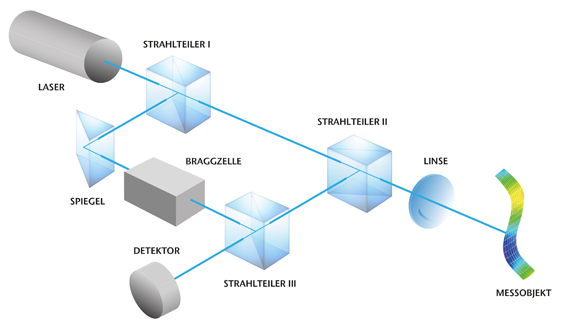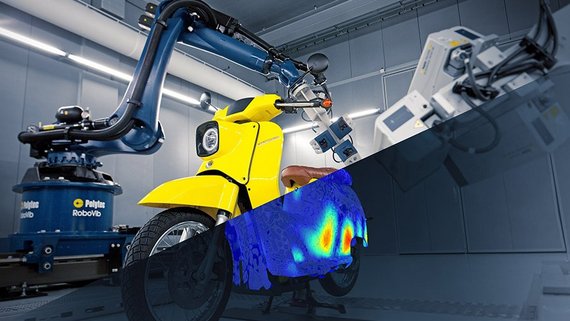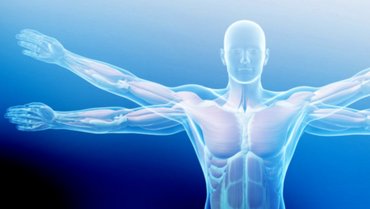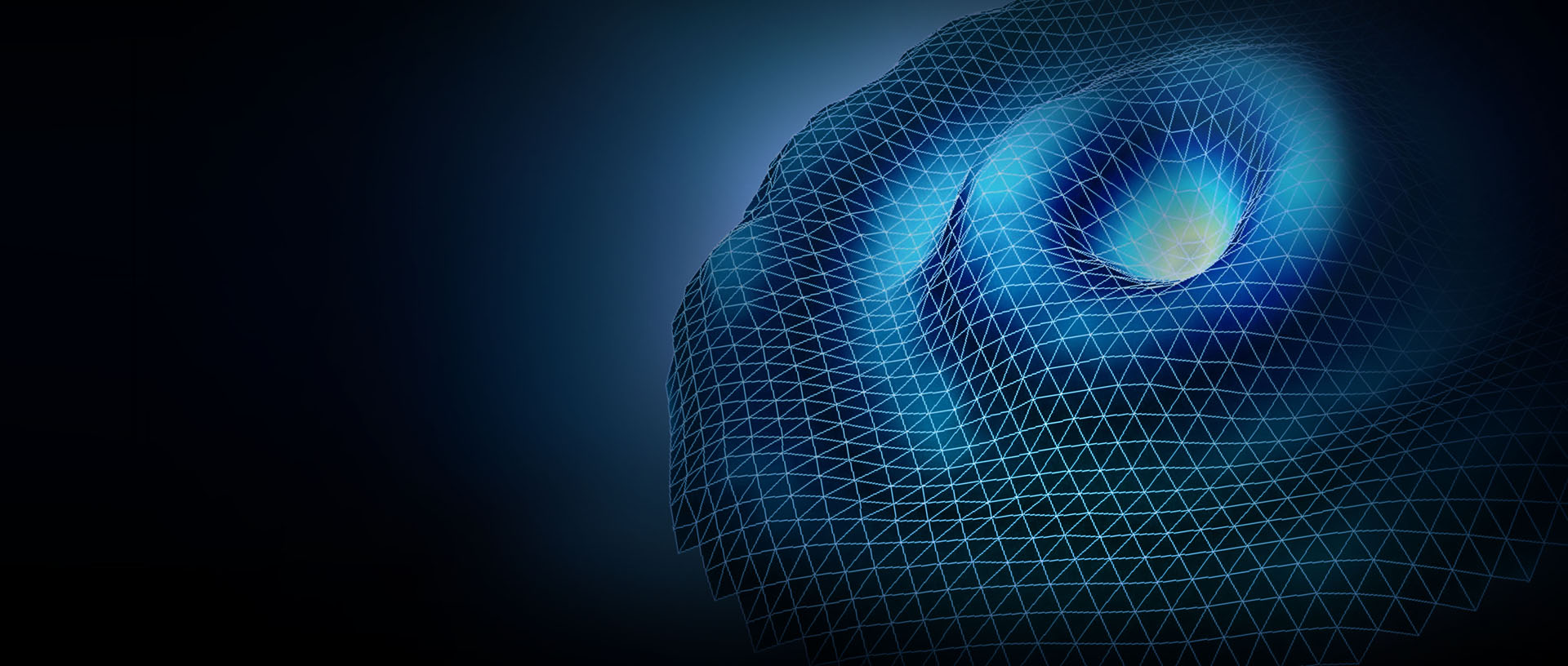The Doppler effect: basics and overview
You are probably familiar with the phenomenon of the acoustic Doppler effect from your everyday life: A police car drives past you with its siren switched on. The horn sounds higher as it approaches and lower as it moves away. Although the sound source does not change, the sound is “compressed” or “stretched” by the movement — this is precisely the Doppler effect. The same thing happens when a car passes you with the horn on. At first, the horn sounds higher, and after the car has passed, it sounds increasingly lower. This is called the Doppler frequency shift, named after the Austrian physicist Christian Doppler, who was the first to describe this relationship. And it is precisely this phenomenon that laser Doppler vibrometers make use of. But don't they measure optically?
The optical Doppler effect
In order to understand the measuring principle of optical vibration sensors, we must first transfer the phenomenon of the Doppler effect to light waves: if a beam of light is reflected by a moving object, its frequency changes in proportion to the speed of the object. This frequency shift contains the velocity information that is used by the laser Doppler vibrometer as a measurement signal.

How is the frequency shift determined?
The measuring principle is based on modern interferometry:
- The laser beam is split into a reference beam and a measurement beam.
- The measurement beam hits the object and is reflected there with a frequency shift due to its movement.
- The reflected light and reference beam are superimposed in the detector (interference).
- The resulting modulation in the detector signal is a direct measure of the speed and vibration amplitude of the surface.
This makes it possible to precisely detect vibrations even at very low amplitudes or high frequencies in difficult or inaccessible places — without contact, mass loading or influencing the measuring point.
Powerful digital decoding electronics convert this frequency shift into a digital signal or an analog voltage signal that is proportional to the vibration velocity and can be easily processed with standard data acquisition systems.
As the speed information is independent of the light intensity, this measuring principle is also suitable for objects with very low reflectivity.
The formula for the Doppler effect
The formula for the Doppler effect describes how the frequency of a wave changes when its source moves relative to the observer. The general formula is:
- f' = f * (v + vo) / (v - vs) — (movement towards each other)
- f' = f * (v - vo) / (v + vs) — (movement away from each other)
- f' the frequency perceived by the observer,
- f the frequency of the source,
- v the velocity of propagation of the wave (e.g. velocity of sound),
- vo the velocity of the observer,
- vs the velocity of the source.
The following applies: If the wave is reflected by a moving object and then registered by a measuring system — as is the case in the laser Doppler vibrometer — the result for the measured frequency shift is:
fD = 2· v/λ
where v is the velocity of the object and λ is the wavelength of the original wave. To determine the velocity of an object in reverse, measure the (Doppler) frequency shift for a known wavelength. You can do this using an interferometer in the laser Doppler vibrometer.
Using the Doppler effect in practice: Laser Doppler vibrometry
Laser Doppler vibrometry (LDV) is a high-precision measurement technique based on the Doppler effect and is used successfully in numerous applications. Instead of sound, laser light is used here to measure the smallest vibrations or movements of an object without contact.

The measuring principle
A laser beam is directed at a vibrating object, for example a machine, a membrane or even human skin. If the object moves, the frequency of the reflected light changes slightly due to the optical Doppler effect.
This change in frequency is measured and the speed or displacement of the movement can be calculated from this.
Advantages of vibrometry
Compared to conventional measurement methods, there are several advantages for vibration analysis: laser Doppler vibrometers combine precise frequency and amplitude measurement, flexibility and complete non-contact measurement. This makes them a key tool in development, quality assurance and basic research when investigating dynamic processes. In industrial applications, there is also no need for costly sound insulation as with microphones, which significantly speeds up quality control, for example — because test specimens no longer have to be placed in special test cabins, which would otherwise increase cycle times.
Experience and test laser Doppler vibrometry live in a free demo!
Technical and everyday applications of the Doppler effect
In addition to vibration measurement technology, the Doppler effect is used in countless technical fields:

Traffic monitoring and radar
Measurement of vehicle speeds with speed traps.

Meteorology
Doppler radar for determining precipitation and wind speeds.

Astronomy
Measurement of the radial velocity of stars and galaxies (red/blue shift).

Medical diagnostics
Doppler ultrasound for measuring blood flow.
Future-proof measurement with the Doppler effect
The laser Doppler effect forms the physical basis for high-precision vibration measurements with laser vibrometers. The technology is an impressive example of the successful transfer of a physically known (everyday) phenomenon — the Doppler effect — to modern, industrial and scientific applications.
